Back in the days of the Arm Action Wars -- and discussions of the Inverted W in particular -- I proposed a term, that I called the Horizontal W, that I felt was more representative of the arm actions of dominant and durable pitchers like Nolan Ryan, Pedro Martinez, and Tom Seaver. While that description was accurate at the time, when I look at modern incarnations of what could be labeled the Horizontal W, I see a very different arm action; one that is likely worse than the Inverted W because it essentially guarantees a major Timing problem that I call Flat Arm Syndrome.
Horizontal W
Although Stephen Strasburg's pitching mechanics -- and specifically his Inverted W -- are blamed for his injury problems, as soon I saw the picture below...
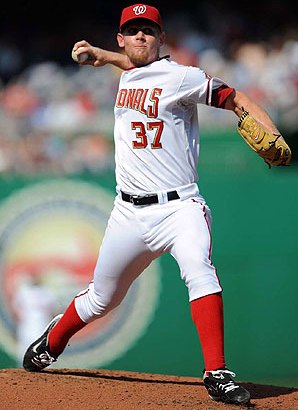
Stephen Strasburg
...I knew that the ultimate root cause of his problems was that his Inverted W morphed into a Horizontal W at foot plant.
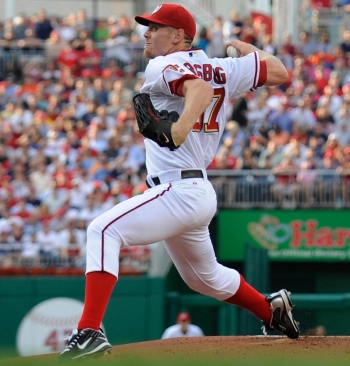
Stephen Strasburg
In the picture above, notice how Stephen Strasburg's front foot is down but his pitching arm is FLAT, not UP.
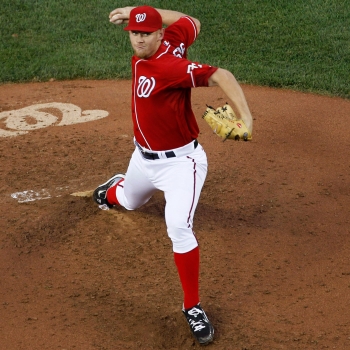
Stephen Strasburg
I don't know what Stephen Strasburg was taught, but I believe the ultimate cause of his injury problems is a highly and increasingly problematic concept called Scap Loading.
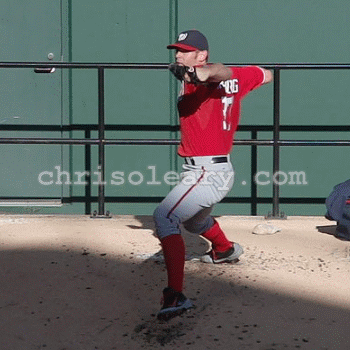
Stephen Strasburg Demonstrating Flat Arm Syndrome
While Stephen Strasburg's Inverted W morphed into a Horizontal W, the Timing problem and Flat Arm Syndrome remained.
Trigger
I've been mulling this piece over for a while, but the trigger for it was a clip of Riley Pint pitching in an early 2016, pre-season showcase that catalyzed my thoughts.
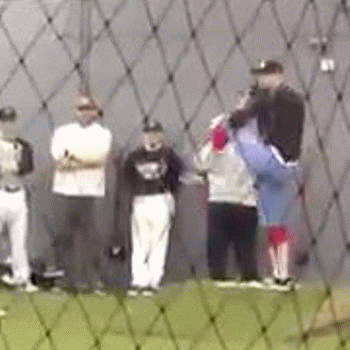
Riley Pint
The problem is that, while Riley Pint is a highly-touted prospect, whenever I see him, and the hype around him, one pitcher comes to mind.
Mark Prior
While it was never really discussed, in trying to come back from his shoulder problems, Mark Prior eliminated his Inverted W and replaced it with more of a Horizontal W.
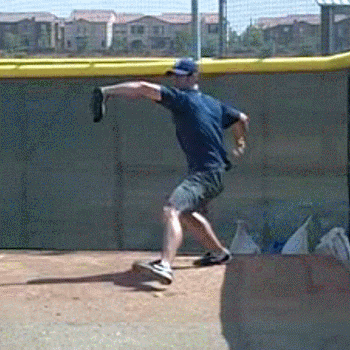
Mark Prior 2010
However, the problem was that, while Mark Prior stopped lifting his elbows as high, he never addressed his more fundamental Timing problem, which I refer to as Flat Arm Syndrome.
Riley Pint
In late 2015, I expressed concern about Riley Pint's pitching mechanics based on a few pictures I saw.

Riley Pint

Riley Pint
Riley Pint's agent saw my tweets and called me to talk about some mechanical changes Riley was working on. He didn't specify what they were working on, but I came to conclude it was Riley Pint's Inverted W.
The lingering concern I have with Riley Pint is that, like late-career Mark Prior, while he no longer makes the Inverted W, he still shares the same underlying flaw that Mark Prior had and never addressed.
Riley Pint's arm is flat when his shoulders start to rotate.

Riley Pint
What's more, the clip above of Riley Pint, which shows him pushing to hit 100mph, exposes a potentially even more serious problem called Early Torso Rotation that he also shares with Mark Prior; notice how Riley Pint's shoulders start rotating before he gets into Foot Plant.
In sum, despite the changes that have been made to Riley Pint's pitching mechanics, he still displays the Flat Arm Syndrome and that you also see in...
...and the Early Torso Rotation that seems to put excessive amounts of stress on the labrum
And what does Riley Pint have to do with the Horizontal W?
The Classic Horizontal W
When I first started talking about the Horizontal W, I was referring to what I see in the arm action of Nolan Ryan in his prime.
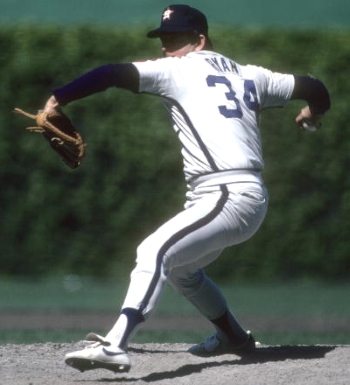
Nolan Ryan
Yes, Nolan Ryan's pitching arm side elbow is well behind his shoulders. However, his front foot is still well off the ground.
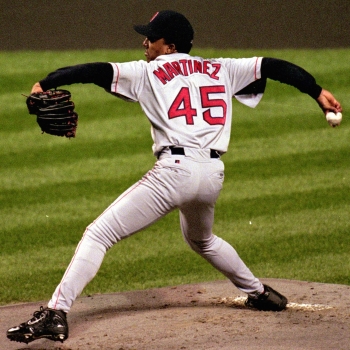
Pedro Martinez
Similarly, while the picture above of Pedro Martinez makes it look like he employed the Inverted W, if you factor out his forward lean, what you are left with is the Horizontal W. That's not a problem because Pedro Martinez is making the Horizontal W well before, not at, Foot Plant.
The Modern Horizontal W
I first saw the Modern Horizontal W in this 2010 clip of Mark Prior.

Mark Prior 2010
Notice how Mark Prior's arms are still flat when he reaches the point of maximum scap load and, more importantly for the health of his shoulder, his shoulders start rotating.
Similarly, Riley Pint's Horizontal W occurs much closer to -- if not at -- Foot Plant and, more importantly, to the rotation of his shoulders and the loading of his pitching arm.
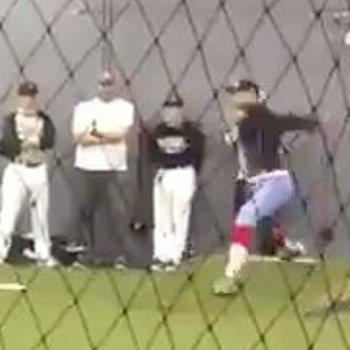
Riley Pint - Frame 18
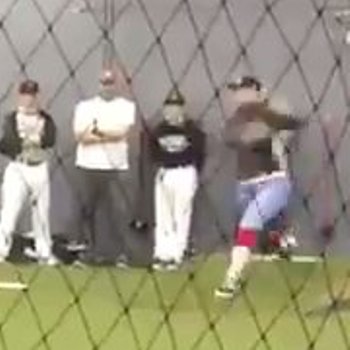
Riley Pint - Frame 19
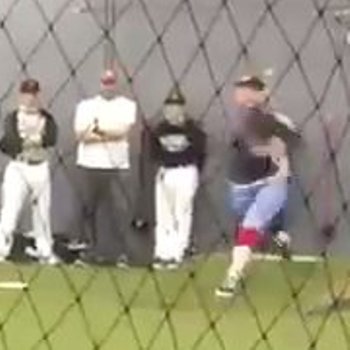
Riley Pint - Frame 20
I use the term Flat Arm Syndrome when referring to this particularly severe form of a Timing problem.
You can see the same basic flawed movement pattern in the arm action of Josh Pettitte (son of Andy), who has undergone two Tommy John surgeries as of the moment when I'm writing this.
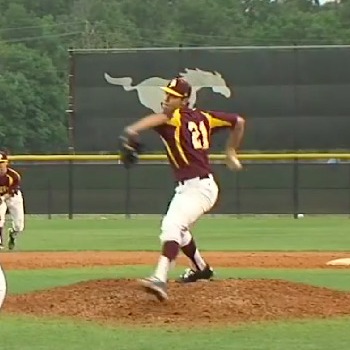
Josh Pettitte - Frame 18
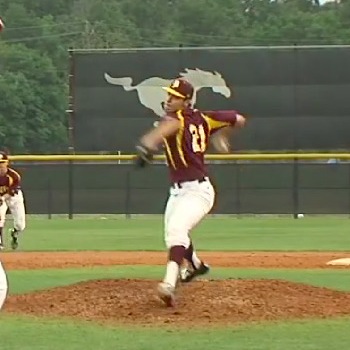
Josh Pettitte - Frame 19
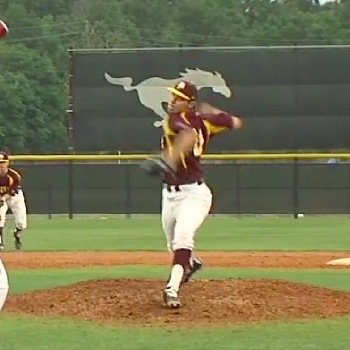
Josh Pettitte - Frame 20
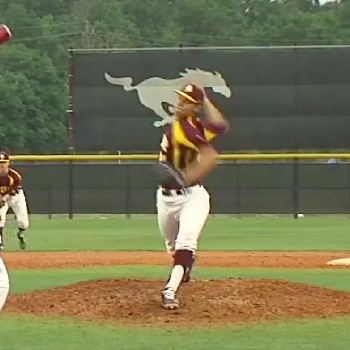
Josh Pettitte - Frame 21
In Josh Pettitte's case, while he shows what looks like the Inverted L that is getting Jose Fernandez, his elbows never get that high. However, what matters is that Josh Pettitte's Horizontal W creates a major Timing problem that I call Flat Arm Syndrome in which his pitching arm starts rotating and loading before it is up.
Glove Side Action and the Horizontal W
One thing I have been studying in depth as part of Dominant & Durable is the glove side. What I see in Michael Wacha, Riley Pint, Josh Pettitte, and other young, big scap loaders is a significantly different movement pattern than you see in Justin Verlander and Nolan Ryan, among others.
For example, one of my concerns about Michael Wacha is the degree and timing of his glove side pull; his glove side pull coincides with what I call a Stall in his arm swing. When Michael Wacha starts pulling with his gloves side elbow, his pitching arm stops externally rotating for a number of frames.
I see the same exact pattern in Riley Pint and Josh Pettitte.